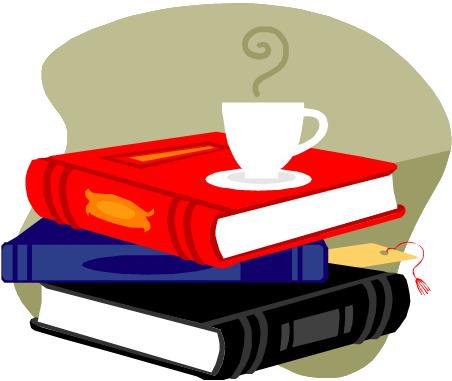

 |  |
|
Hannah's Revenge
|
Please go to the new Coffee Coaster site implemented more gracefully in Wordpress. This page @ http://brianrwright.com/CoffeeCoasterBlog/?p=3599 |
This little work of nonfiction was sent to me by James Maynard of the SciArt Media publishing concern (kind of a Free State general literary startup company).[2] It's the story of Hannah Dustin, a wife and mother living on the American Frontier in the late 17th century in a town named Haverhill, which is now located in the state of Massachusetts.
The simple narrative is by Juanita Carey, based on research she did when she was a school librarian in Allenstown, New Hampshire. A fourth-grade teacher asked Ms. Carey if she could find any material on Hannah Dustin, who seemed to be 'a very interesting woman in New Hampshire history.' As the author launched her research she discovered that Dustin had become somewhat controversial, with books and articles written about her years ago relegated to 'reserved' sections in the bowels of the NH library system.
Why? What had Hannah done that became so controversial?
Well, if you have an hour or so—Hannah's Revenge is only 31 pages long, double-spaced, with large font—take a journey down the English colonial paths and streams of yesteryear. As indicated in the opening quotation from page one, settlers in more remote areas had to constantly be concerned with Indian raids and kidnappings, where the victims would wind up as slaves and breeders for the Indians or for French interests. Ms. Dustin, having only six days previously given birth to her 12th child, was brutally taken from her home—along with Hannah's newborn baby and a neighbor woman, Mary Neff—and force marched northward.
It's a harrowing story, and I'm not going to spoil it by giving you the punch line. Let's just state that Hannah hangs in there, sees some opportunities for turning the tables, and takes them. In so doing she becomes a legend and the first American woman to be awarded a medal for bravery.
What's the big deal about Hannah Dustin? Well, I can give enough away to tell you that she winds up freeing herself and three others causing a world of hurt to her captors in the process. She becomes celebrated in later years, with Henry David Thoreau writing an admiring account in 1849. But she's also scorned by other notables, such as Nathaniel Hawthorne who describes her as a "bloody old hag," whom he considers an opportunist on the misfortunes of others... with her story probably not being authentic.
Into modern times, it becomes politically incorrect to speak evil about the American Indian.[3] And frankly, after viewing (and reviewing) Dances with Wolves recently, I was so ashamed of "my people" that I couldn't imagine the Indians were ever the guilty party in encounters between the cultures. Reading Hannah tends to change everything back, catapults me back to the 1950s and those Westerns where Indians were universally reviled and worthy of being stamped out by the good (white) guys. [Heck, as five-year-olds, we were given 'Cowboys and Indians' toys. Nobody wanted to be an 'injun.']
War games, I suppose. And mind control.
Let's read between the lines of Hannah, though:
But if Hannah was shy about sharing her tale with her family, she was certainly not shy about what to do now that she was safe at home. After they had left the island and were beginning their flight home she had remembered what she had heard about a bounty given by the General Court of Massachusetts for Indian scalps. That was what had impelled her to go back to the island. Now was the time to make good on that plan.
... Unbeknownst to the Dustins, the court had repealed the bounty months before Hannah's capture but, despite that, they voted a generous award of twenty-five pounds for Hannah and twelve pounds, ten shillings each for Mary Neff [Hannah's neighbor] and Samuel Leonardson. These were truly magnificent gifts but they were not the only ones to follow. While waiting for the money to be given, Hannah told her story to Rev. Cotton Mather, the well-known Puritan preacher and writer. From there the tale spread like wild fire throughout the colonies. — page 28
The two items that stand out are that a) in that era a general bounty existed for Indian scalps—with presumably no distinction as to whether the Indian person attached to the hair had committed any offense whatsoever—and b) Cotton Mather, the famous jurist and religious writer who fanned the mass hysteria of the Salem Withcraft trials in which many were killed for the capital crime of witchcraft, was instrumental in publicizing the Hannah Dustin story.
No I'm not saying the general policies of the American English colonists were genocidal and Inquisitional, nor, that were they so, it was acceptable for some Indians to rape and pillage along the frontier. All I'm saying is the religious authoritarianism of the era in that region of New England makes it difficult to see these European immigrants as a generally benevolent and innocent population. Seems like cruelty was the order of the day... especially if sanctified by psychotic men in robes praising the Lord.
But thanks, Juanita, for bringing this exceptional piece of American history back into the light. In my mind, consider the controversy over Hannah Dustin to be continued.
###
[1] In fact, the French and Indian War the author refers to is the American theater of the "long war" between the French and British for control of the world that lasted for a hundred years or so: The French-British Wars, 1689-1815.
[2] SciArt Media has also published some writers whose works I've posted on the Coffee Coaster, notably Ron Kaiser. Please check out my reviews of Carved in Granite and Carved in Granite II.
[3] Just a note about terminology. Back in my day, in the 60s and 70s, when minorities tended to be lumped into the Left as oppressed peoples—supposedly oppressed by market capitalism as opposed to fascist corporatism—it became fashionable to refer to American Indians as Native Americans. I shared that sensibility until one day, in 1987, on a road trip with with libertarian-Indian activist Russell Means, I was informed that I was a native American. He preferred the designation American Indian. And that's why I use it.

Click banner to order, click here for book review
 |
||||